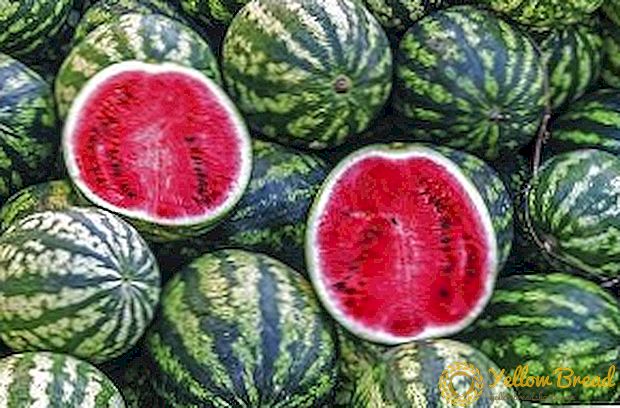 Today, not one recipe for canning beans for the winter is known: it is rolled in its pure form, in tomato paste, in the form of salads, with and without vinegar.
Today, not one recipe for canning beans for the winter is known: it is rolled in its pure form, in tomato paste, in the form of salads, with and without vinegar.
To the already loved and familiar ways, we suggest adding one more.
- About the benefits of billet
- Kitchen appliances and utensils
- Required Ingredients
- Features of product selection
- Step-by-step recipe with photos
- Storage features
About the benefits of billet
The proposed recipe for beans in tomato sauce for the winter is good because you can use the finished billet in a non-uniform manner. The richness of the preparation makes it an excellent independent dish, and it can also be used as a ready dressing for soups and borscht. 
Kitchen appliances and utensils
To prepare canned beans in tomato sauce, prepare:
- bowl for soaking the beans;
- containers for chopped vegetables;
- knife;
- grater;
- pan for boiling beans and stewing vegetables;
- container and stand for sterilizing lids and cans;
- jars and lids;
- sealer key (if using tin covers).
Required Ingredients
For beans with vegetables for the winter with a recipe you will need:
- Dry beans - 0.5 kg;
- Carrots - 0.5 kg;
- Onions - 0.5 kg;
- Bulgarian pepper - 0.75 kg;
- Tomato paste (30%) - 250 g;
- Water - 1 liter;
- Vegetable oil - 200 ml;
- Sugar - 0.5 tbsp .;
- Salt - 1.5 Art. l .;
- Citric acid - 7 g (1 tsp.);
- Coriander - 2 tsp;
- Black pepper - 1-2 tsp.

Features of product selection
To cook the beans in tomato sauce according to this recipe, take the beans white: although they cook longer and longer, but mixed with other vegetables will look more aesthetically pleasing. Bulgarian pepper, carrots and onions, choose a medium size. Any favorite tomato paste is also suitable.
Step-by-step recipe with photos
We turn to how to cook the beans in a tomato.
Bean preparation
Before cooking, reassemble the beans and rinse thoroughly. Pour the beans with cold water for at least 12 hours: this is how they will cook faster and be absorbed better. The next day, drain the water and rinse the beans.
Cooking process
First put the boiled beans. From time to time removing the foam, boil them until done and drain the water. 
Cooking vegetables
While the beans are boiling, chop the vegetables: cut the onion and pepper into cubes, and grate the carrots on a coarse grater.
Tomato paste, water, salt, oil
To the prepared beans add chopped vegetables and mix well. Add tomato paste and water, and mix again. Bring everything to a boil, then add salt, sugar and vegetable oil.
Extinguishing
Simmer vegetables on low heat for 40-45 minutes. If you take small beans, then reduce the stewing time to 30-35 minutes. Five minutes before the end of quenching, pour in citric acid. 
Adding spices
Along with citric acid, add coriander, black pepper and, if desired, cayenne pepper or chili pepper for spice.
Sterilization of cans
Sterilize the jars with steam. On a pot of boiling water, install the stand for sterilizing the cans, and on it - the jar with the neck down. Sterilize the container for 10-15 minutes until the vapor in the banks begins to drip over them. Also boil lids in boiling water. 
Rolling up
For seaming, use the zakatochny key. In case you use twist-off twist jars, just close the lid tightly. Make sure that the contents of the jar do not fall under the cover puzzles, and fill the container itself not up to the top.
Storage features
When seaming cans with tin lids, the blank can be stored for quite a long time, about a year. If you used the European twist-off covers, store the preservation for about six months.  Indulge yourself and your family with such fortified preparation this winter. Saturated color will please the eye, and the sweetish taste and coriander smell will not leave anyone indifferent. Enjoy your meal!
Indulge yourself and your family with such fortified preparation this winter. Saturated color will please the eye, and the sweetish taste and coriander smell will not leave anyone indifferent. Enjoy your meal!






